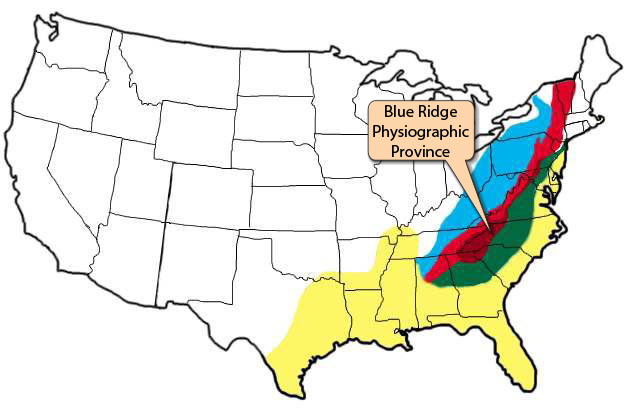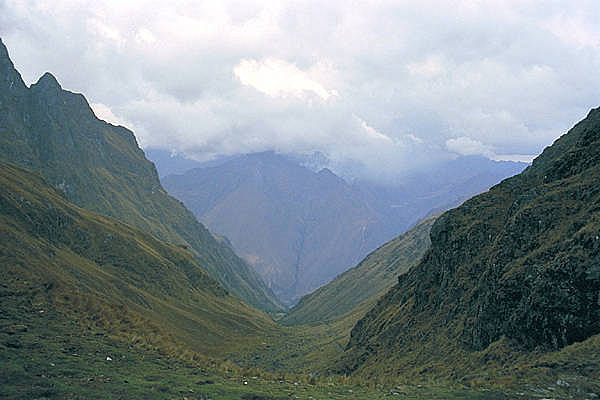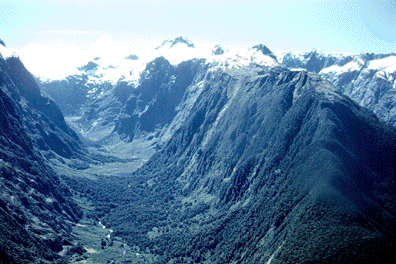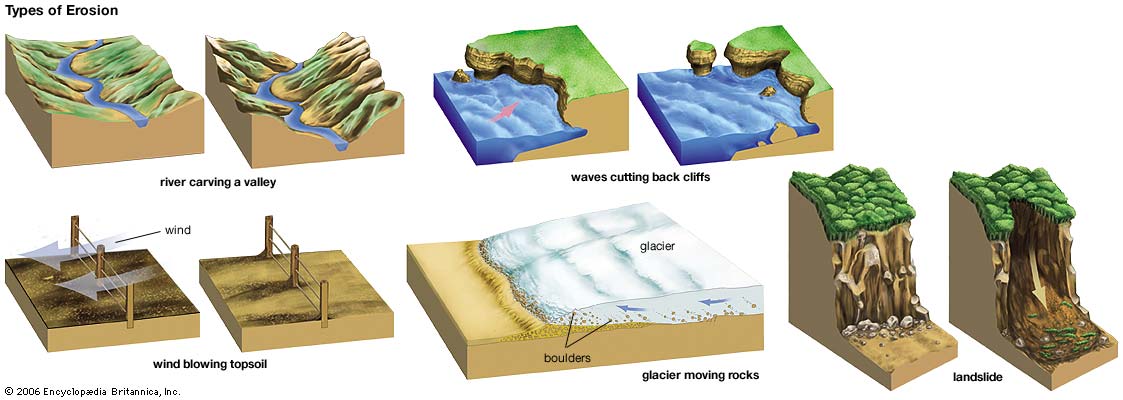Local geology:
A Physiographic Region is a region of which all parts are similar in geologic structure and climate and which has consequently had a unified geomorphic history; a region whose patterns of relief features or landforms differs significantly from that of adjacent regions. Welcome to the Appalachian Blue Ridge geologic and physiographic province. It is made up of Late Proterozoic rocks; mostly metamorphosed sandstone, siltstone, shale, and conglomerate formed over 800–450 million years ago. Millions of years of weathering have caused significant erosion, giving the mountains in the region, including the ones seen from here, a distinctive, gentle sloping feature. The Blue Ridge Mountains are a physiographic province of the larger Appalachian Mountains range. This province consists of northern and southern physiographic regions, which divide near the Roanoke River gap. The mountain range is located in the eastern United States, starting at its southernmost portion in Georgia, then ending northward in Pennsylvania.

Valley
A valley is an extended depression in the Earth's surface that is usually bounded by hills or mountains and is normally occupied by a river or stream. Because valleys are usually occupied by a river, they can also slope down to an outlet which can be another river, a lake or the ocean.
Valleys are one of the most common landforms on the Earth and they are formed through erosion or the gradual wearing down of the land by wind and water. In river valleys for example, the river acts as an erosion agent by grinding down the rock or soil and creating a valley. The shape of valleys varies but they are typically steep-sided canyons or broad plains, however their form depends on what is eroding it, the slope of the land, the type of rock or soil and the amount of time the land has been eroded.
There are three common types of valleys which include V-shaped valleys, U-shaped valleys and flat floored valleys. (Victor R. )
V-Shaped Valley
A V-shaped valley, sometimes called a river valley, is a narrow valley with steeply sloped sides that appear similar to the letter "V" from a cross-section. They are formed by strong streams, which over time have cut down into the rock through a process called downcutting. These valleys form in mountainous and/or highland areas with streams in their young stage. At this stage, streams flow rapidly down steep slopes. (Victor R. )

Source: http://www.quia.com/files/quia/users/fleach/Landforms/landforms-V-shaped-valley
U-Shaped Valley
A U-shaped valley is a valley with a profile similar to the letter "U." They are identified by steep sides that curve in at the base of the valley wall. They also have broad, flat valley floors. U-shaped valleys are formed by glacial erosion as massive glaciers moved slowly along. U-shaped valleys are found in areas with high elevation and in high latitudes, where the most glaciation has occurred. Due to their large size and weight, glaciers are able to completely alter topography, but it is the alpine glaciers that formed most of the world's U-shaped valleys. This is because they flowed down pre-existing river or V-shaped valleys during the last glaciation and caused the bottom of the "V" to level out into a "U" shape as the ice eroded the valley walls, resulting in a wider, deeper valley. For this reason, U-shaped valleys are sometimes referred to as glacial troughs. (Victor R. )

Source: http://geoscience.wisc.edu/~chuck/Classes/Mtn_and_Plates/Images/C124glaciated_valley.gif
Flat-Floored Valley
The third type of valley is called a flat-floored valley and is the most common type in the world. These valleys, like V-shaped valleys, are formed by streams, but they are in their mature stage. The valley floor gets wider. Because the stream gradient is moderate or low, the river begins to erode the bank of its channel instead of valley walls. This eventually leads to a meandering stream across a valley floor. Over time, the stream continues to meander and erode the valley's soil, widening it further. With flood events, the material that is eroded and carried in the stream is deposited which builds up the floodplain and the valley. During this process, the shape of the valley changes from a V or U shaped valley into one with a broad flat valley. (Victor R. )

Source: http://geography-site.co.uk/pages/physical/glaciers/images/trough.jpg
Erosion
Erosion is the process by which soil and rock are removed from the Earth's surface by natural processes such as wind or water flow, and then transported and deposited in other locations. In this particular area at GZ, Water has caused most of the Erosion here.
Types of Erosion:
Splash Erosion: Small soil particles are detached and sent airborne through the impact of raindrops on soil.
Sheet Erosion: Raindrops break apart the soil structure and it's moved down-slope by water that flows overland as a sheet rather than definitive channels. This occurs frequently during cloud bursts.
Rill Erosion: This process develops small, short-lived, concentrated flow paths. These paths create a sediment source and delivery system for hill-slope erosion. Areas where precipitation rates exceed soil infiltration rates are more prone to this type of erosion.
Gully Erosion: Water flows in narrow channels during or directly following heavy rains or melting snow. The gullies can erode to considerable depths.
Valley or Stream Erosion: Continual water flow alongside land (along a linear feature) creates this type of erosion. It extends downward, deepening a valley, and head-ward, extending the valley into the hillside. This occurs most frequently in times of flooding.
Bank Erosion: Over time, banks of rivers and streams are naturally worn down.
Freezing and thawing: Cold weather causes water trapped in tiny rock cracks to freeze and expand, breaking the rock into several pieces.
Wind erosion is a major geomorphological force, especially in arid and semi-arid regions. Wind erosion is of two primary varieties: deflation, where the wind picks up and carries away loose particles; and abrasion, where surfaces are worn down as they are struck by airborne particles carried by wind.
Mass movement is the downward and outward movement of rock and sediments on a sloped surface, mainly due to the force of gravity. Mass movement is an important part of the erosional process, and is often the first stage in the breakdown and transport of weathered materials in mountainous areas. It moves material from higher elevations to lower elevations where other eroding agents such as streams and glaciers can then pick up the material and move it to even lower elevations. Mass-movement processes are always occurring continuously on all slopes; some mass-movement processes act very slowly; others occur very suddenly, often with disastrous results.

Source: (water)
**Logging requirements**
DO NOT POST ANSWERS IN YOUR LOG.
Send the following answers to me via email.
- The text "GC5FC9M Mountain Valley View" on the first line
- How many valleys are seen from here, directly leading into the town? (The photo sign will help)
- The valley floor below has an elevation of 1480, how high are you above the valley below?
- How wide is the valley directly in front of you? (see waypoint “Other”)
- In the far top, left side of the sign here, in the black strip across the top, what mountain is listed? No it is not "Mount Le Conte"
- What type of valley is directly in front of you?
| I have earned GSA's highest level: |
 |